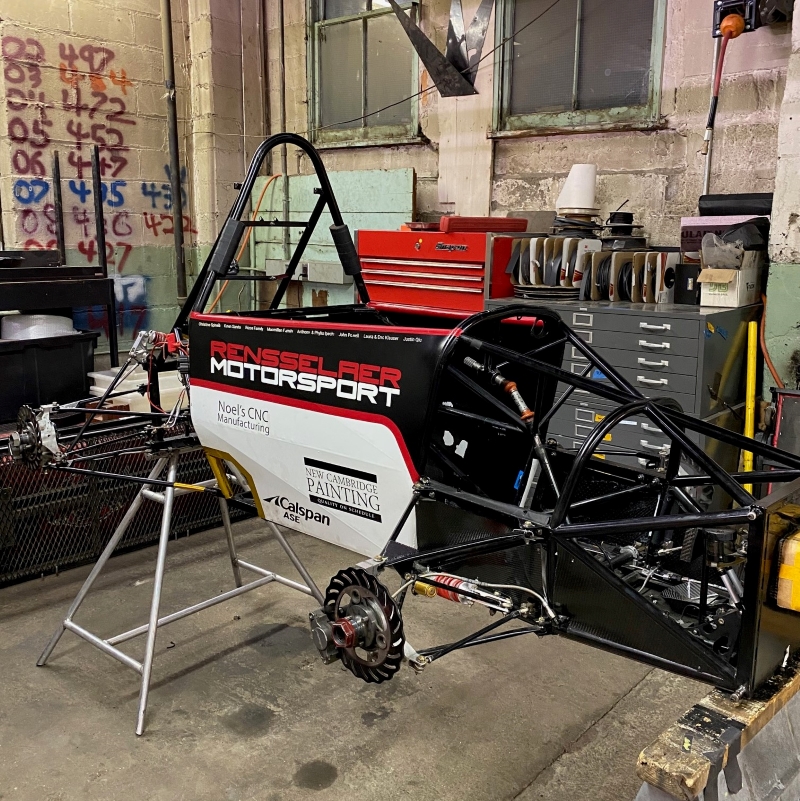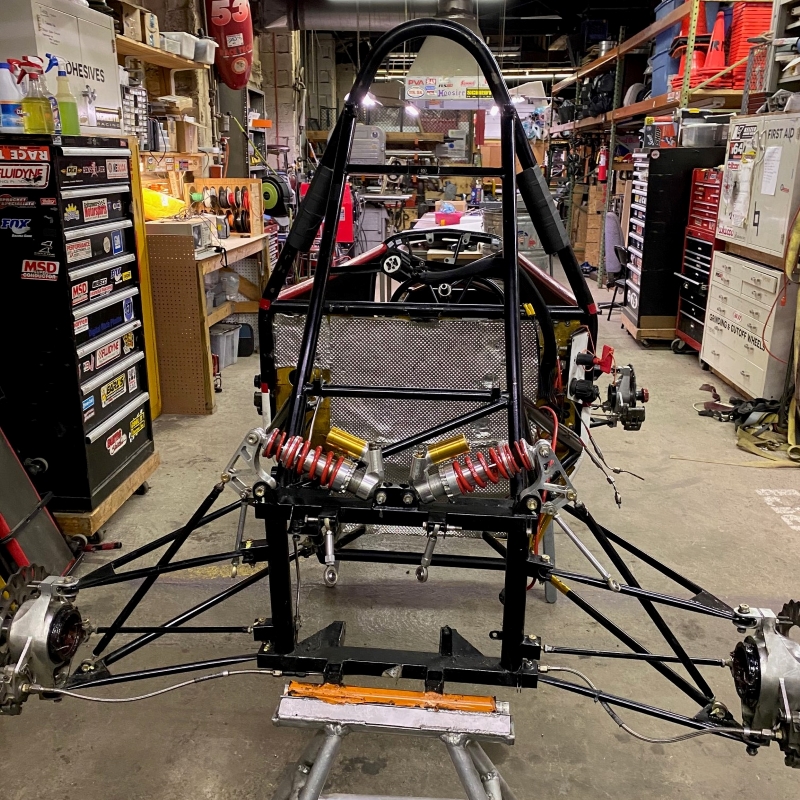RM26 EV Thermal Management System Design
Contributors: Matthew Galarza
Introduction
An extension of a previous battery cooling project, this project addresses the design of a thermal management system for the Rensselaer Motorsport v26 electric vehicle. The growing trend towards an environmentally-friendly and energy-efficient society has shifted the focus of automotive manufacturers from IC engines to battery-powered electric motors. As a result, the Rensselaer Motorsport team will be transitioning to an EV car for the upcoming year which will bring about new requirements for the effective cooling of electronic components. Specifically, the electronic speed controller (ESC), electric motor, and accumulator (which holds the battery array) will require cooling to prevent component damage and degrade car performance.
The current area of focus is in the design of an adaptive thermal management cooling circuit with water as the working fluid. The circuit designed will have all components in series and the cooling fluid will be supplied by a pump. The current analysis is to supply the ESC and motor with cooling fluid. Current FEM and CFD analysis demonstrates that supplied air from car movement is sufficient in cooling battery cells with occasional help from selected fans. The circuit will be cooled by radiators mounted to the side of the vehicle with designated sidepods. The air collected from the sidepods will be forced through the radiators cooling the circuit fluid. This air will then be directed towards the accumulator and motor for dual cooling benefits.
The overall deliverable for this project is to design a robust thermal module for the vehicle that can intake run data and output real-world results. The main challenge of this project is the development of transient control volume equations for each component as most are black boxes and information provided by manufacturers can be insufficient. To combat this, a steady-state analysis is completed as a worst-case situation. This ensures the cooling metrics are met and allows the design of the vehicle for racing in the spring. During operation, component data is recorded and provides plots where regressions can be implemented. As an example, unknown parameters needed to generate transient ODEs for components can be determined. These ODES can be evaluated using state space and ODE solvers, providing time-dependent outputs. The benefit of component ODEs is that changes to system design can be computationally tested rather than physically tested. This removes the need for vehicle benchmarking and the potential oversights associated with FEM and CFD simulation. Another benefit is that the system can be improved over time with the availability of more data.
The project is ongoing and therefore not much is posted here. I have attached a brief description for the first design review below. Please take a look and reach out if you would like to learn more about the project!

